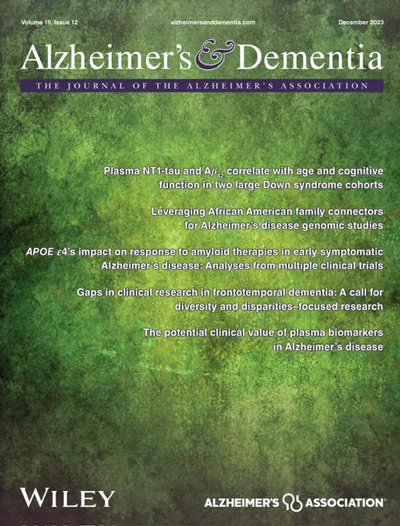Amyloid precursor protein and presenilin-1 knock-in immunodeficient mice exhibit intraneuronal Aβ pathology, microgliosis, and extensive neuronal loss
Abstract
INTRODUCTION
Transgenic mice overexpressing familial Alzheimer's disease (AD) mutations (FAD) show non-physiological traits, and their immunocompetent backgrounds limit their use in AD immunotherapy research. Preclinical models that reflect human immune responses in AD are needed.
METHODS
Using CRISPR-Cas9, we developed single (NA) and double (NAPS) knock-in (KI) amyloid precursor protein (APP)KM670,671NL (Swedish) and presenilin 1 (PS 1)M146VFAD mutations on an immunodeficient NOG (NOD.Cg-PrkdcscidIl2rgtm1Sug/JicTac) background. The models were confirmed by Sanger sequencing and evaluated for AD-like pathology.
RESULTS
Both NA and NAPS mice developed pathology without overexpression artifacts. Mutation-induced upregulation of APP-CTF-β led to intraneuronal human amyloid beta (Aβ) (6E10) deposits and amyloid-associated microgliosis as early as 3 months, which increased with age. The addition of the PS 1M146V mutation doubled the amyloid load. The models displayed broad neuronal loss, resulting in brain atrophy in older mice.
DISCUSSION
These models replicate intraneuronal amyloid pathology and, with human immune reconstitution potential, enable novel studies of human immune responses in AD.
Highlights
- A novel Alzheimer's disease (AD) knock-in (KI) mouse was developed and characterized on an immunodeficient NOG background. The model provides a platform for human immune studies and the evaluation of immunotherapies for AD.
- The KI mice demonstrate intraneuronal Aβ deposits and amyloid-associated microglial reactions.
- KI mice demonstrate extensive neuronal loss.
- Human immune reconstitution enables studies of infectious AD co-morbidities, such as the human immunodeficiency and herpes simplex viruses.


 求助内容:
求助内容: 应助结果提醒方式:
应助结果提醒方式:


